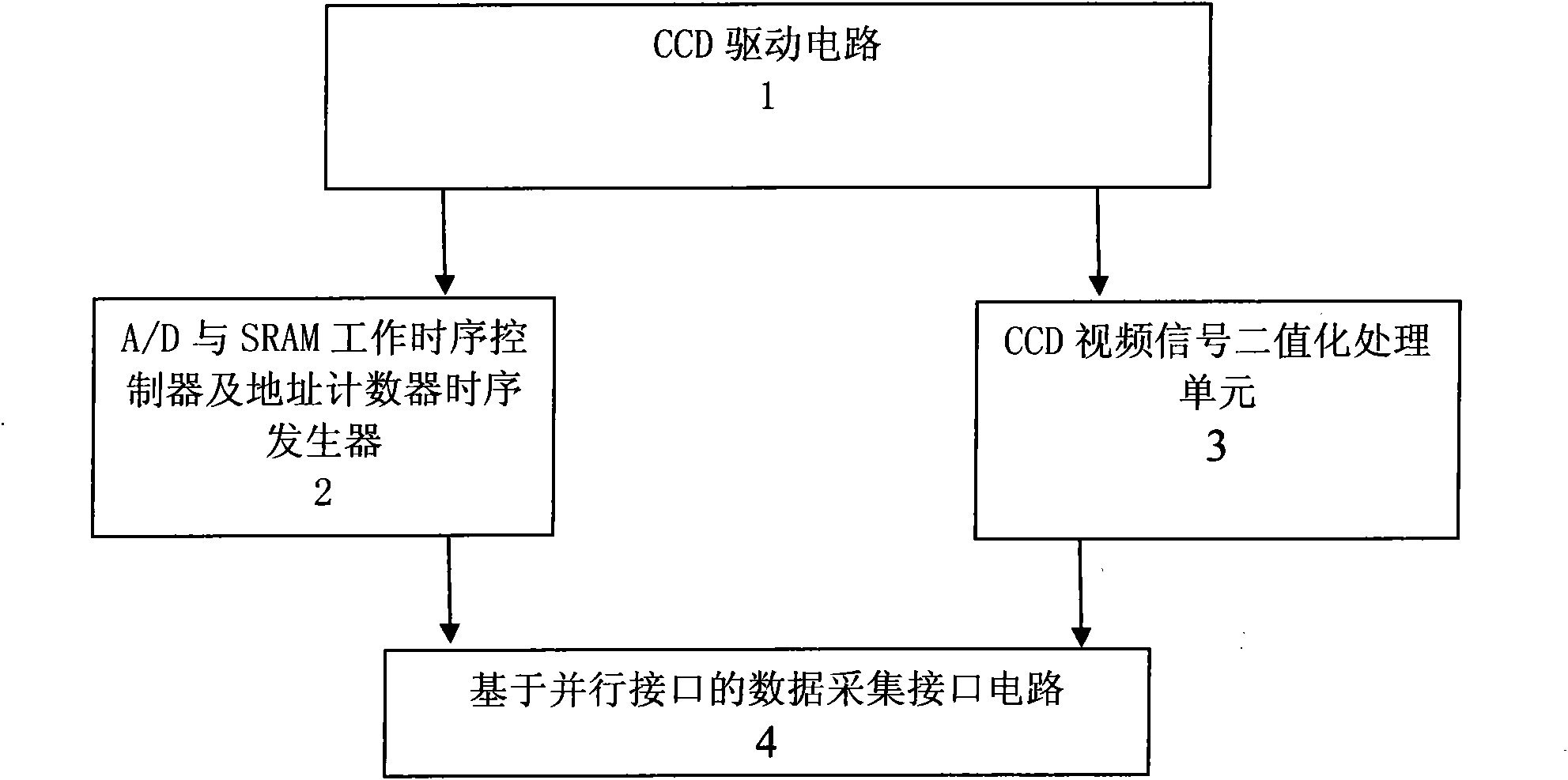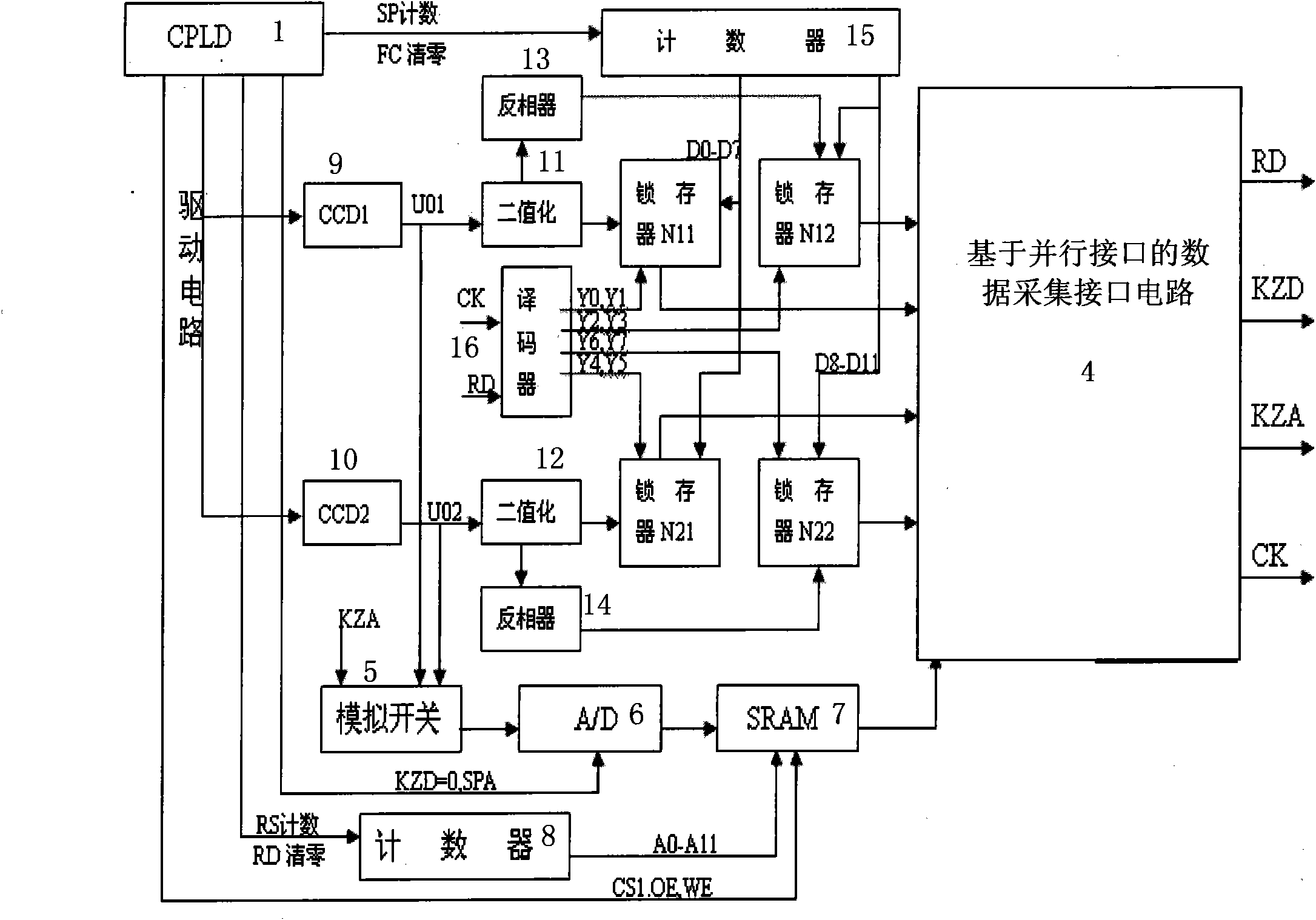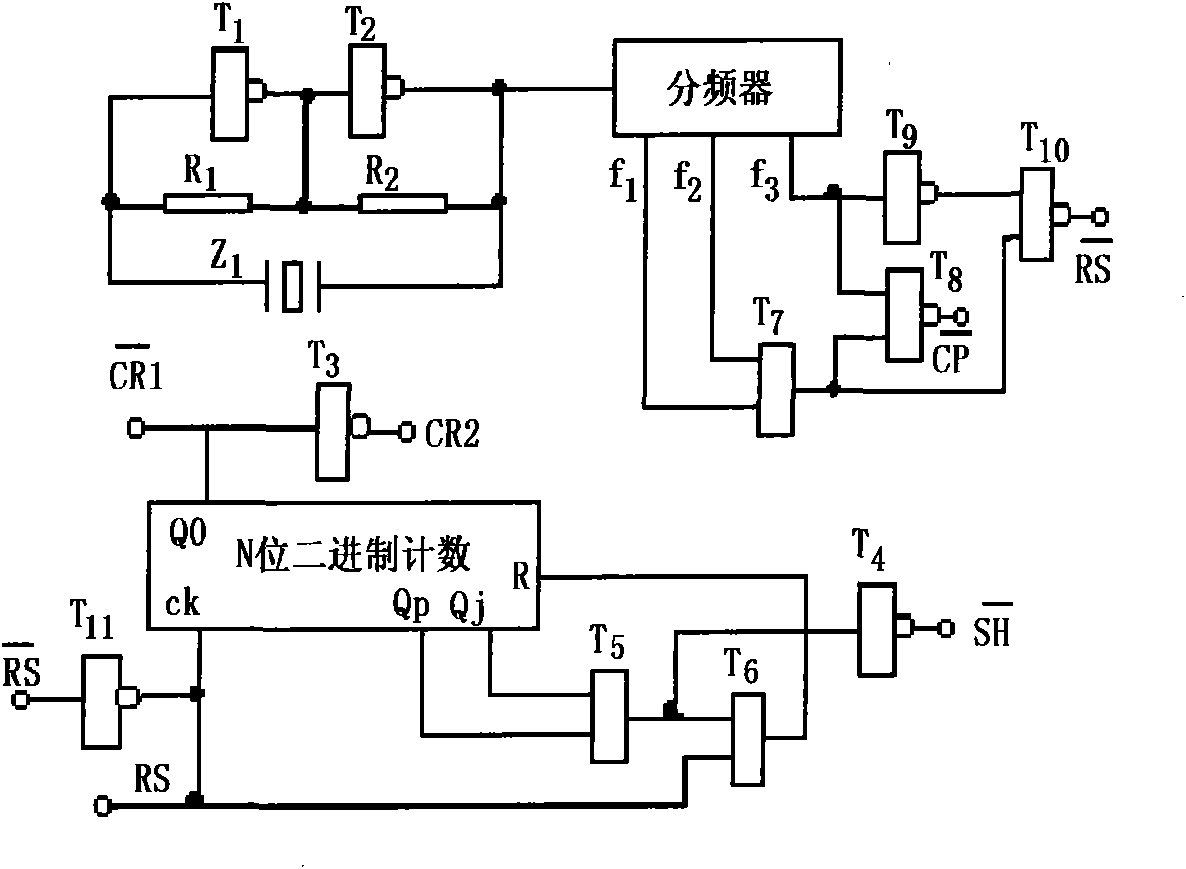Non-contact synchronous measuring instrument for subgrade and rail vibration
A synchronous measurement, non-contact technology, used in instruments, measuring devices, measuring ultrasonic/sonic/infrasonic waves, etc., can solve the problems of large error, low precision, and cumbersome testing methods, achieve intelligentization, avoid precision reduction, and eliminate The effect of human factors
- Summary
- Abstract
- Description
- Claims
- Application Information
AI Technical Summary
Problems solved by technology
Method used
Image
Examples
Embodiment Construction
[0035] The non-contact synchronous measuring instrument for roadbed and rail vibration of the present invention will be described in detail below in conjunction with the embodiments and the accompanying drawings.
[0036] Such as figure 1 As shown, the non-contact synchronous measuring instrument of roadbed and rail vibration of the present invention includes a CCD drive circuit 1, an A / D and SRAM working timing controller and an address counter timing generator 2, and a CCD video signal binarization processing unit 3 And based on the data acquisition interface circuit 4 of parallel interface, wherein, described CCD driving circuit 1 is connected respectively CCD video signal binarization processing unit 3 and A / D and SRAM work timing controller and address counter timing generator 2, for The CCD device provides necessary working pulses, and generates an interface signal with the data acquisition card; the output of the CCD video signal binarization processing unit 3 and the A...
PUM
 Login to View More
Login to View More Abstract
Description
Claims
Application Information
 Login to View More
Login to View More - R&D
- Intellectual Property
- Life Sciences
- Materials
- Tech Scout
- Unparalleled Data Quality
- Higher Quality Content
- 60% Fewer Hallucinations
Browse by: Latest US Patents, China's latest patents, Technical Efficacy Thesaurus, Application Domain, Technology Topic, Popular Technical Reports.
© 2025 PatSnap. All rights reserved.Legal|Privacy policy|Modern Slavery Act Transparency Statement|Sitemap|About US| Contact US: help@patsnap.com



